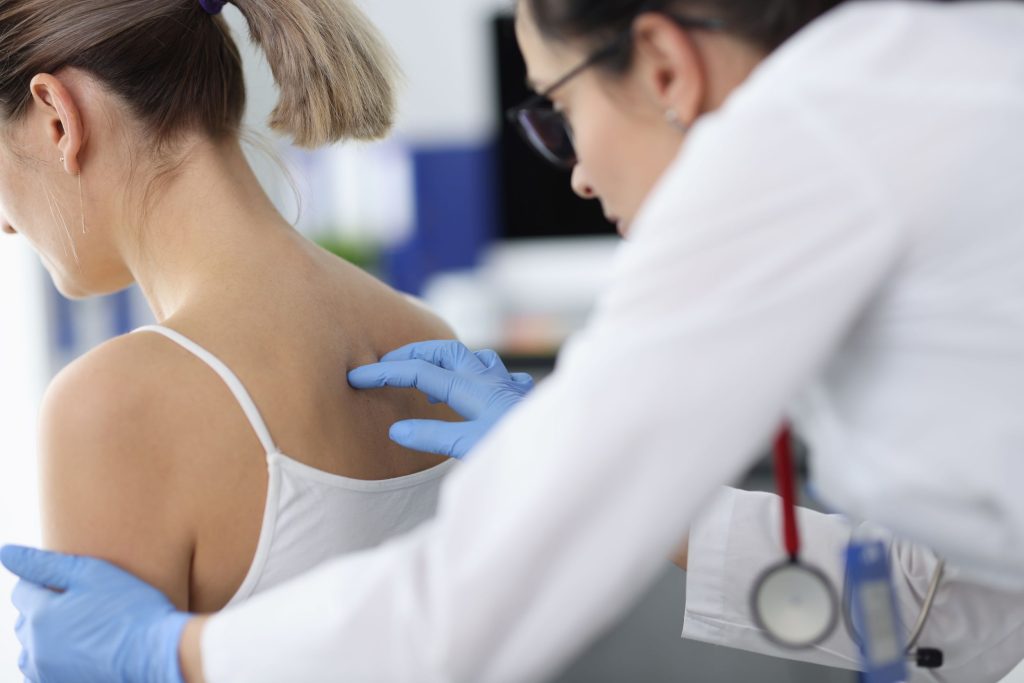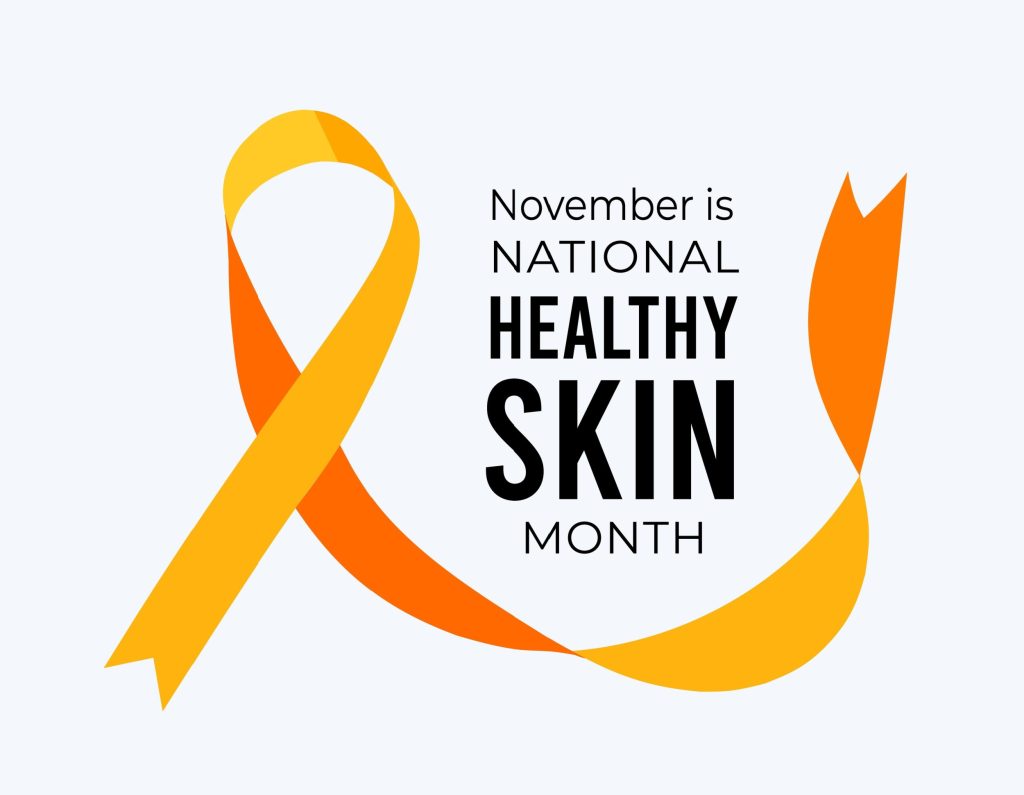
In our last blog, we discussed the warning signs your skin might give you when your internal health may need attention. We reviewed dry and itchy skin; unusual hair growth; thinning hair, hair loss, and dry scalp; yellow and red bumps; hives; as well as hyperpigmentation and dark patches. In part two of our series, we will look at five additional skin health signals. As we previously mentioned, your skin can often reveal underlying issues with your body’s health. When there’s an internal issue, your skin may exhibit changes as a part of its stress response. Knowing what to look for and determining next steps can help your skin and internal health be at their best.
If your body is trying to tell you something, you might experience one of the following.
Flush Skin
If your skin is constantly flushed, you may have rosacea. Rosacea is a very common condition that typically causes your skin to look like it’s blushing on the cheeks and forehead. This is due to dilated blood vessels that become wide and fill with blood. Other symptoms of rosacea include swollen bumps, a tender, burning sensation of the skin, dry and irritated eyes, and a nose that appears to be swollen.
Additionally, flushed skin can also indicate you are going through hormonal changes such as menopause, or signs that you could have an overactive thyroid. Endocrine disorders, certain medications, drinking alcohol, being too hot, or responses to conditions such as anxiety can also cause a flushed face. If you don’t have a history of any of the above and notice the onset of a ruddy complexion, it is wise to make an appointment for a skin exam.
Noticeable Veins
Veins typically tell the story of your circulatory health. Spider and varicose veins on your face can be caused by factors such as age, genetics, and weight. Typically, when capillaries dilate, they cause bulging underneath the skin due to the pressure of extra blood. Especially in the face, since the veins are close to the skin’s surface, they are more evident. Influences such as sun damage, excessive pressure (from forceful face washing, popping pimples, sneezing, vomiting, or facial injuries), environmental or chemical irritants, alcohol consumption, high estrogen levels, or certain medical conditions can also contribute to the visibility of facial veins.
Facial veins can also be a warning from your body that you may have an issue with blood flow.
Having an annual skin exam with a dermatologist can help determine causes and treatments for excessive veins.
Skin Lesions
A skin lesion can include a mole or birthmark and can also develop as a result of an allergic reaction, sensitivity to medication, sun exposure, or diabetes. Lesions can also arise from several other issues such as neuropathy, vitamin deficiencies, insect bites, liver and kidney diseases, infectious and autoimmune diseases, and cancer. Diagnosing skin lesions is extremely important so proper treatment can begin as soon as possible. During a skin exam, a dermatologist will assess the color, shape, and size of the lesion(s) and discuss pertinent medical history of the patient. Some skin lesions may require additional diagnostic testing, and ultimately a biopsy may be performed.
If you notice a new mole or growth, you should conduct a skin self-exam right away by following the ABCDEs of melanoma, and subsequently schedule an appointment with a dermatologist to make sure your mole isn’t cancerous.
Skin lesions can be treated with topical medications, laser therapy, surgical removal such as Mohs micrographic surgery, chemotherapy, and radiation.
Nail Changes
If you notice a change in your nails’ color, texture, or shape, it may be time to see a dermatologist. Internal issues your nails may inform you about include a nail or fungal infection, melanoma, lung disease, lupus, psoriasis, circulation problems, iron deficiency, heart or liver disease, anemia, or diabetes. From curved nails, or “clubbing” to nails with dark streaks, some nail issues are harmless, while others need medical attention. Because of this, it’s essential to see a dermatologist to determine a diagnosis and prevent any complications from becoming worse.
Pallid Complexion
Is your skin looking a little lifeless and dull? You may need to increase your water intake, as you could be dehydrated. Sallow complexion, when combined with other symptoms like fatigue, weakness, pain, and anxiety can also be an indicator of hypothyroidism, iron deficiency anemia, vitiligo, or even blood cancer. It’s important to see your doctor if you notice any changes in your skin’s color and tone.
If you begin spotting any of the above or other rapid changes in your skin, it’s important to make an appointment with your dermatologist as soon as possible. It may be as simple and treatable as having irritated skin from allergies or weather changes, but it could also be something more serious that needs more comprehensive medical intervention. By taking charge of your health, you are giving yourself the gift of prolonged wellness, both internally and externally.
FLDSCC Can Help You with Your Skin Concerns
FLDSCC’s team of providers are experts in diagnosing and treating skin cancers; skin conditions and diseases such as eczema, rosacea, dry skin, rashes, and warts; and chronic skin diseases and infections, while simultaneously tackling aging skin, wound care, and a multitude of other skin, hair, and nail concerns.
Several FLDSCC providers are fellowship-trained in Mohs micrographic surgery, an effective state-of-the-art treatment for most types of skin cancers. Mohs surgery involves minimal discomfort and encourages the greatest preservation of healthy tissue, which means less risk of scarring and superior cosmetic results.
FLDSCC has many convenient locations throughout the state. For more information, visit www.fldscc.com, or call (855) FLD-SKIN.


